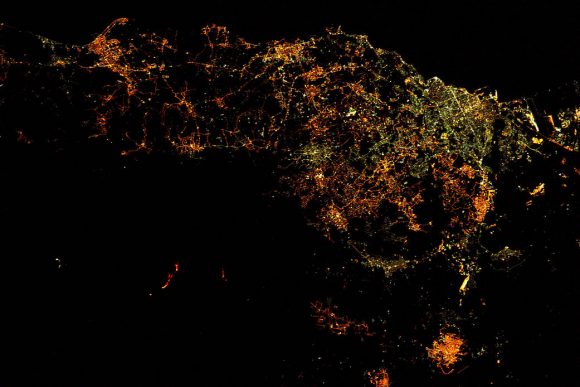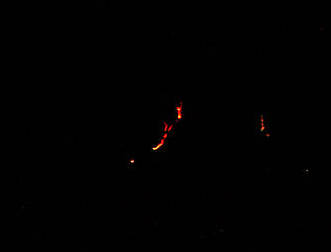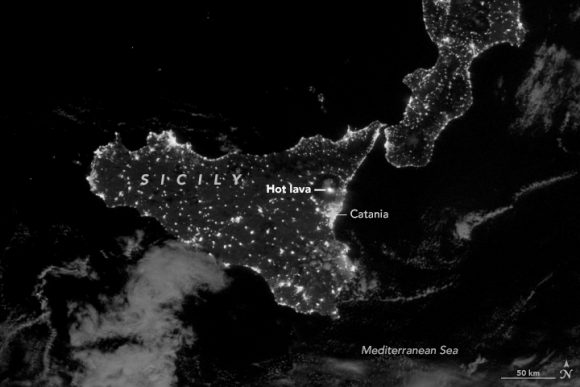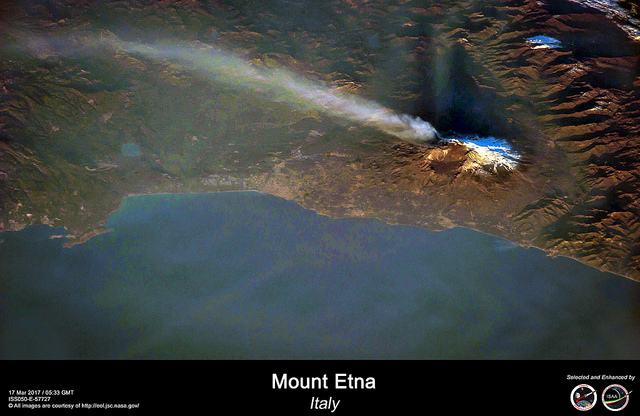Mount Etna is Europe’s most active volcano, and it’s been spouting off since late February 2017. It spewed lava and gas with a rather big eruption last week, where 10 people were actually injured. The Expedition 50 crew on board the International Space Station have been able to capture both day and nighttime views of the activity from orbit.
The stunning view, above, was taken on March 17, 2017. The original photo, which you can see on NASA’s Gateway to Astronaut Photography of Earth website is actually a bit hard to make out. But space enthusiast Riccardo Rossi from Modena, Italy enhanced the original with color correction and increased the contrast with Photoshop. You can see the full version of Rossi’s enhancements on Flickr. .
ESA astronaut Thomas Pesquet took the image below on March 19, and shared it on Twitter, writing, “Mount Etna, in Sicily. The volcano is currently erupting and the molten lava is visible from space, at night! (the red lines on the left).”

This crop shows the glowing lava:

Mount Etna towers above the city of Catania on the island of Sicily. Scientists estimate it has been active for about 500,000 years. The first recorded eruption dates back to 1500 B.C., and it has erupted over 200 times since then.
NASA’s Suomi NPP satellite also spotted nighttime activity from orbit. The image was acquired by the Visible Infrared Imaging Radiometer Suite (VIIRS), using its “day-night band,” which detects light in a range of wavelengths and uses filtering techniques to observe signals such as gas flares, city lights, and reflected moonlight. In this image, it detected the nighttime glow of molten lava.

Further reading:
NASA Image of the Day
NASA Earth Observatory

